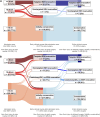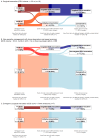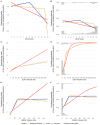Clinical and Imaging Characteristics, Care Pathways, and Outcomes of Traumatic Epidural Hematomas: A Collaborative European NeuroTrauma Effectiveness Research in Traumatic Brain Injury Study
- PMID: 38771081
- PMCID: PMC11449426
- DOI: 10.1227/neu.0000000000002982
Clinical and Imaging Characteristics, Care Pathways, and Outcomes of Traumatic Epidural Hematomas: A Collaborative European NeuroTrauma Effectiveness Research in Traumatic Brain Injury Study
Abstract
Background and objectives: Guideline recommendations for surgical management of traumatic epidural hematomas (EDHs) do not directly address EDHs that co-occur with other intracranial hematomas; the relative rates of isolated vs nonisolated EDHs and guideline adherence are unknown. We describe characteristics of a contemporary cohort of patients with EDHs and identify factors influencing acute surgery.
Methods: This research was conducted within the longitudinal, observational Collaborative European NeuroTrauma Effectiveness Research in Traumatic Brain Injury cohort study which prospectively enrolled patients with traumatic brain injury from 65 hospitals in 18 European countries from 2014 to 2017. All patients with EDH on the first scan were included. We describe clinical, imaging, management, and outcome characteristics and assess associations between site and baseline characteristics and acute EDH surgery, using regression modeling.
Results: In 461 patients with EDH, median age was 41 years (IQR 24-56), 76% were male, and median EDH volume was 5 cm 3 (IQR 2-20). Concomitant acute subdural hematomas (ASDHs) and/or intraparenchymal hemorrhages were present in 328/461 patients (71%). Acute surgery was performed in 99/461 patients (21%), including 70/86 with EDH volume ≥30 cm 3 (81%). Larger EDH volumes (odds ratio [OR] 1.19 [95% CI 1.14-1.24] per cm 3 below 30 cm 3 ), smaller ASDH volumes (OR 0.93 [95% CI 0.88-0.97] per cm 3 ), and midline shift (OR 6.63 [95% CI 1.99-22.15]) were associated with acute surgery; between-site variation was observed (median OR 2.08 [95% CI 1.01-3.48]). Six-month Glasgow Outcome Scale-Extended scores ≥5 occurred in 289/389 patients (74%); 41/389 (11%) died.
Conclusion: Isolated EDHs are relatively infrequent, and two-thirds of patients harbor concomitant ASDHs and/or intraparenchymal hemorrhages. EDHs ≥30 cm 3 are generally evacuated early, adhering to Brain Trauma Foundation guidelines. For heterogeneous intracranial pathology, surgical decision-making is related to clinical status and overall lesion burden. Further research should examine the optimal surgical management of EDH with concomitant lesions in traumatic brain injury, to inform updated guidelines.
Trial registration: ClinicalTrials.gov NCT02210221.
Copyright © 2024 The Author(s). Published by Wolters Kluwer Health, Inc. on behalf of the Congress of Neurological Surgeons.
Figures







References
-
- Sarkar K, Keachie K, Nguyen U, Muizelaar JP, Zwienenberg-Lee M, Shahlaie K. Computed tomography characteristics in pediatric versus adult traumatic brain injury. J Neurosurg Pediatr. 2014;13(3):307-314. - PubMed
-
- Peeters S, Blaine C, Vycheth I, Nang S, Vuthy D, Park KB. Epidemiology of traumatic brain injuries at a major government hospital in Cambodia. World Neurosurg. 2017;97:580-589. - PubMed
-
- Cheung PS, Lam JM, Yeung JH, Graham CA, Rainer TH. Outcome of traumatic extradural haematoma in Hong Kong. Injury. 2007;38(1):76-80. - PubMed
-
- Haselsberger K, Pucher R, Auer LM. Prognosis after acute subdural or epidural haemorrhage. Acta Neurochir (Wien). 1988;90(3-4):111-116. - PubMed
-
- Sakas DE, Bullock MR, Teasdale GM. One-year outcome following craniotomy for traumatic hematoma in patients with fixed dilated pupils. J Neurosurg. 1995;82(6):961-965. - PubMed

